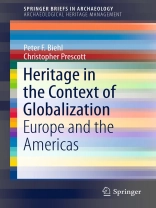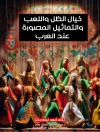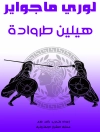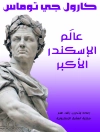This brief is the proceedings of two roundtables and forums organized by Eszter Bánffy, Peter Biehl, Douglas Comer, and Christopher Prescott and sponsored by the European Association of Archaeologists (EAA) and the Society for American Archaeology (SAA) held at the 76th SAA annual conference in Sacramento in April 2011, and the 17th EAA annual conference in Oslo in September 2011. The book is organized around five main issues with the goal to stimulate discussion, research and practices within the field: Traditions and legal regulations of heritage and its management The teaching of cultural heritage; public outreach and university training Heritage and national identity The future of cultural heritage in a globalized and digitized world This book is thus be an exploration of the various experiences in Europe and the Americas to better understand, in the vast field of archaeology and cultural heritage management, where we are today, where we might be, and where we hope to be in the near future.
Table des matières
SECTION I: INTRODUCTION 1. Coming to Grips with Archaeology and Heritage in a Transformed World Peter F. Biehl (Buffalo) & Christopher Prescott (Oslo) SECTION II: Traditions and Legal Regulations of Heritage and its Management 2. Heritage Values, Jurisprudence, and Globalization Hilary A. Soderland (Berkeley) 3. A Viable Dinosaur? Cultural Heritage Management and the Universities in Norway Karl Kallhovd (Oslo) and Håkon Glørstad (Oslo) 4. Heritage Management from Science to Commodification François Giligny (Paris) SECTION III: Teaching of Cultural Heritage 5. Teaching Cultural Heritage in Europe and the US Peter F. Biehl (Buffalo) 6. The teaching of cultural heritage. Distance learning applications in vocational training Arkadiusz Marciniak (Poznan) 7. Heritage and the new immigrant minorities – A catalyst of relevance for contemporary archaeology? Christopher Prescott (Oslo) SECTION IV: Heritage and Identity 8. Archaeology, Minorities, Identity, and Citizenship in the United States Douglas C. Comer (Baltimore) 9. The non-existing Roma archaeology and non-existing Roma archaeologists Eszter Bánffy (Budapest) 10. Gender, Stakeholders, and Ethics in Heritage Management and Outreach Janet E. Levy (Charlotte) SECTION V: The Future of Cultural Heritage in a Globalized and Digitized World 11. From punch cards to virtual space. Changing the concept of archaeological heritage management in the digital age Petr Květina and Markéta Končelová (Prague) 12. Virtual Repatriation: It’s Virtual, but it’s not Repatriation Robin Boast (Cambridge) and Jim Enote (New Mexico) 13. New Trends in Digital Heritage Maurizio Forte, University of California (Merced) SECTION VI: Outlook 14. The Future of Heritage in a Globalized World Peter F. Biehl (Buffalo) & Christopher Prescott (Oslo)












